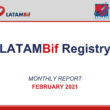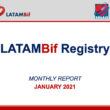Here is a new SOLACI PERIPHERAL Case! In this opportunity, Dr. Ana Paula Mollón (Arg.) presents “Common, Superficial and Deep Femoral Artery Recanalization”. This is the 6th clinical case presented by SOLACI Peripheral. The purpose of this space is to encourage and further the exchange of experiences and opinions, to keep advancing our knowledge in...
Biodegradable Polymer Myth Also Debunked for ACSs
During TCT 2020 a preview of the results of the comparison of drug-eluting stents (DES) with biodegradable-polymer vs. durable-polymer in patients with acute coronary syndrome (ACS) was presented. The fine print and the final paper for HOST-REDUCE-POLYTECH-ACS are now published, and they lower the expectations set on biodegradable polymers. In patients with ACS undergoing angioplasty, biodegradable-polymer...
Efficacy of Mass Vaccination with Pfizer/BioNTech against COVID-19 in Israel
We need to know how effective vaccines are by population subgroup outside the controlled setting of a clinical trial. Israel was one of the first countries to deploy a nationwide mass vaccination strategy. This is why it results ideal to compare its results against clinical trial results. All subjects receiving the BNT162b2 mRNA Covid-19 Vaccine...
Contralateral Occluded Carotid Defines Revascularization Strategy
A significative lesion to the carotid artery in addition to contralateral carotid occlusion is an obvious factor of high risk for a revascularization procedure. However, this might be true for surgery but not for carotid artery stenting according to this recent publication in JACC. The presence of contralateral carotid occlusion has been established as high...
LATAMBif Registry: February 2021 Report
The Latin American Registry of Percutaneous Coronary Bifurcations continues to develop at a steady pace. The aim of this prospective multicenter registry is to assess the reality of percutaneous coronary bifurcation to define its needs and establish effective strategies to perfect the daily clinical practice. Bellow you will find data from February 2021, which includes...
Revascularization Is Needed Before TAVR
Disease prevalence in patients with severe aortic stenosis is highly variable: from 80% in inoperable patients to only 15% according to the most recent research including low-risk patients. Given the high mortality observed in patients with heart disease, guidelines suggest considering coronary bypass revascularization in those in need of a valve replacement. This experience with...
The Most Read Articles in Interventional Cardiology during February
01- Efficacy of AstraZeneca’s Vaccine against COVID-19 This study, published in the Lancet, looks into the vaccine resulting from the collaboration of the Oxford University and AstraZeneca, among others. Read more HERE 02- Findings on Sputnik V Vaccine Against COVID-19 The Sputnik V vaccine was developed by Gamaleya NRCEM. Similarly to the Oxford-AstraZeneca vaccine, it is based on a viral vector,...
Diastolic Dysfunction and TAVR: Prognosis before and after Procedure
The PARTNER 2 SAPIEN 3 showed baseline diastolic dysfunction is a predictor of clinical events after 2 years of TAVR. As expected, improved diastolic function after procedure immediately changes prognosis. Though these outcomes did meet our expectations, very few studies have shown hard evidence linking diastolic dysfunction and aortic stenosis. All patients included in the...
LATAMBif Registry: January 2021 Report
The Latin American Registry of Percutaneous Coronary Bifurcations continues to develop at a steady pace. The aim of this prospective multicenter registry is to assess the reality of percutaneous coronary bifurcation to define its needs and establish effective strategies to perfect the daily clinical practice. Bellow you will find data from January 2021, which includes...
Coronary Access After TAVR: A Potential Problem Ahead
Coronary cannulation after transcatheter aortic valve replacement (TAVR) was unsuccessful in almost 10% of patients. This problem occurred almost exclusively in those who received a self-expanding valve. This study, recently published in JACC Cardiovasc Interv., was sought to investigate the feasibility of coronary ostia access after TAVR and describe potential predictors of coronary access impairment....









